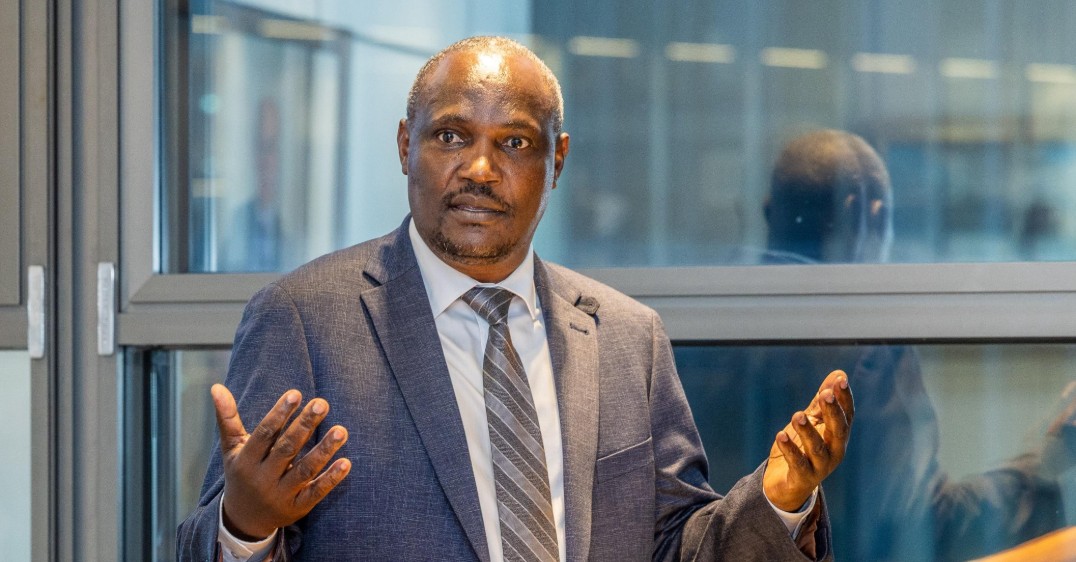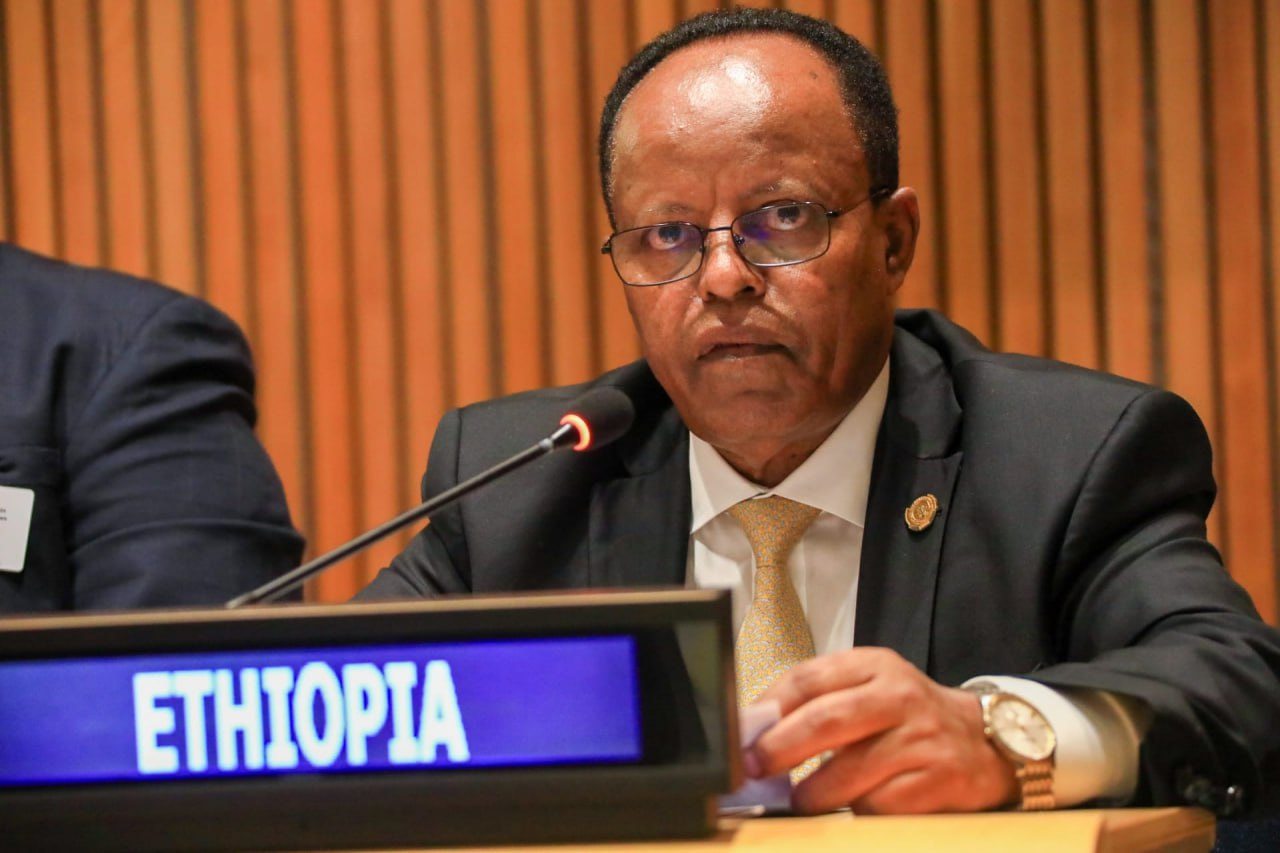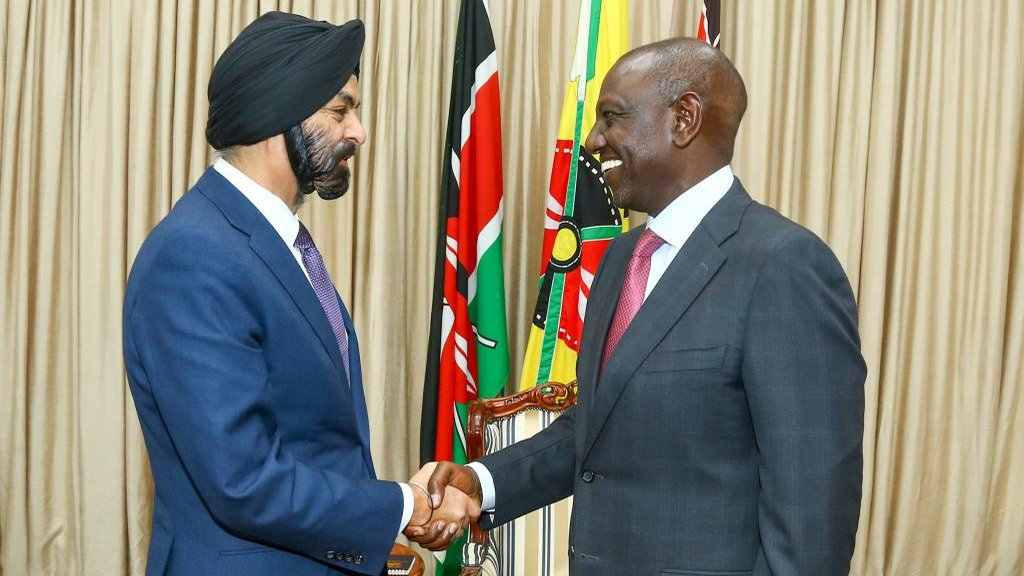Public Finance & Economic Development
Kenya Sets Q4 2025 Fringe Benefit Tax Rate at 8%
Kenya keeps the deemed interest rate steady at 8% despite recent CBK rate cuts. Businesses can now close their financial year with confidence.

Kenya Revenue Authority retains the fringe benefit and deemed interest tax rate at 8% for Q4 2025, reinforcing stability for employers.
NAIROBI, Oct. 26, 2025 — The Kenya Revenue Authority (KRA) has maintained both the fringe benefit tax (FBT) market interest rate and the deemed interest rate at 8 percent for the final quarter of 2025. This decision, announced on October 21, underscores KRA’s commitment to providing predictability in tax administration amid recent monetary easing.
Employers must apply an 8% market interest rate when valuing fringe benefits such as staff loans and other non-cash perks. The 8% deemed interest rate also applies to employer or shareholder loans where no interest is charged. From these amounts, a 15% withholding tax must be deducted and paid to the Commissioner within five working days, according to Bloomberg Tax.
Steady Policy Despite Rate Cuts
The 8% rate remains unchanged even after the Central Bank of Kenya (CBK) reduced the benchmark Central Bank Rate to 9.25% from 9.50% earlier this month. The move was intended to stimulate borrowing amid moderating inflation.
By keeping the FBT and deemed interest rates steady, KRA separates tax computation from short-term monetary fluctuations. This prioritizes predictability for employers and payroll systems. The Q4 rate covers October through December 2025 and serves as a reference for year-end tax planning.
Employer and Payroll Implications
Fringe benefit tax applies when employers provide non-cash benefits like low-interest loans, housing, or vehicles. Under Section 12B of the Income Tax Act, employers must compute taxable value using a prescribed market rate. Section 16(2)(ja) imposes a deemed interest charge on interest-free or below-market loans from foreign affiliates or related parties.
“The 8% benchmark provides continuity for businesses closing their financial year,” said a Nairobi-based tax consultant advising multinational firms. “Predictable reference rates help employers comply and avoid last-minute recalculations.”
Some experts warn that a fixed rate may not always reflect market conditions. If lending costs fall below 8%, the FBT may overstate taxable values. Conversely, if commercial lending rises, the rate may understate employees’ benefit costs.
The Legal Notice
KRA’s official notice states:
“For the purposes of Section 12B of the Income Tax Act, the Market Interest Rate is 8%. This rate shall apply for October, November, and December 2025. For the purposes of Section 16(2)(ja) of the Income Tax Act, the prescribed rate of interest is 8%. Withholding tax at 15% on the deemed interest shall be deducted and paid to the Commissioner within five working days.”
The language mirrors the previous quarter’s directive, showing KRA’s preference for consistent FBT and deemed interest rates.
Market Reaction
Industry bodies have welcomed the move. The Institute of Certified Public Accountants of Kenya (ICPAK) said the stable tax reference improves predictability for financial reporting. “A consistent rate enables employers to make reliable projections on payroll and tax obligations,” the institute noted.
Analysts caution that future adjustments may be necessary if interest rates diverge significantly. For now, the 8% benchmark is seen as a prudent choice, offering stable compliance for employers and multinational subsidiaries through year-end.
Compliance Checklist
Tax experts advise employers to:
- Update payroll and benefits systems to reflect the 8% rate for Q4 2025.
- Reassess employee loan portfolios to ensure correct FBT calculations.
- Remit withholding tax on deemed interest within five working days.
- Document compliance with KRA’s circular for audit readiness.
- Monitor new notices for Q1 2026 adjustments.
Maintaining the same rate for two consecutive quarters reduces mid-year recalculations and supports corporate financial stability.
Fiscal Context
The decision aligns with Kenya’s broader effort to strengthen domestic revenue and maintain fiscal stability under the Medium-Term Revenue Strategy. It also complements reforms aimed at simplifying compliance and broadening the tax base without sudden shocks to the private sector.
As 2025 winds down, tax consistency is becoming a key feature of the government’s fiscal agenda. With borrowing costs stabilizing and inflation easing, Kenya’s 8% fringe benefit benchmark offers certainty to employers, investors, and auditors alike.
Public Finance & Economic Development
Kenya Launches Sovereign Wealth Fund
Kenya has launched the Kenya Sovereign Wealth Fund to manage oil, gas, and mineral revenues unveiled on Oct. 25, 2025. The fund aims to shield the economy from commodity shocks and secure savings for future generations.

Kenya unveils a sovereign wealth fund on Oct. 25, 2025 to manage oil and mineral income, ensuring fiscal stability and growth.
Kenya Launches Sovereign Wealth Fund for Oil and Minerals
NAIROBI, Oct. 26 — Kenya has launched a sovereign wealth fund to manage income from its growing oil, gas, and mineral resources. The move aims to protect the economy from price shocks and, in turn, create a long-term financial buffer for citizens.
A New Model for Resource Management
The Kenya Sovereign Wealth Fund (KSWF), unveiled on Oct. 25, 2025, will pool revenues from crude oil in Turkana County, natural gas in the Lamu Basin, and minerals such as gold, titanium, and rare earth elements. In addition, the government says the fund will improve fiscal planning and stabilize spending.
The structure mirrors successful examples such as Norway’s Government Pension Fund Global and Botswana’s Pula Fund, which have helped countries convert volatile resource income into steady growth.
Finance Minister John Mbadi emphasized that the fund will promote fiscal discipline and inter-generational equity.
“This is about turning our natural resources into lasting financial assets,” Mbadi said during the Nairobi launch.
The KSWF will operate through three divisions — a Stabilization Fund to offset oil-price swings, a Savings Fund for long-term investment, and a Development Fund to finance key infrastructure. Furthermore, a professional board under Treasury supervision will ensure compliance and transparency.
Funding and Governance Structure
Kenya’s initial contribution amounts to Sh100 billion ($640 million), drawn from royalties, profit oil, and mineral income. Future inflows will include budget surpluses and returns from fund investments.
The International Monetary Fund (IMF) noted that the KSWF could strengthen Kenya’s fiscal resilience as public debt nears Sh10 trillion ($64 billion). Consequently, the IMF has encouraged clear reporting rules and risk-management frameworks.
Experts agree the timing is critical. “Establishing the fund before production peaks is a smart move,” said Faith Odinga, an economist at the Kenya Institute for Public Policy Research and Analysis (KIPPRA). “It will help Kenya avoid the overspending that often undermines resource economies.”
Other African nations, including Ghana and Nigeria, have set up similar funds. However, Kenya plans to improve governance by publishing quarterly reports and commissioning independent audits.
“Full disclosure is the only way this fund will earn public trust,” said Samuel Karanja of Transparency International Kenya. “As a result, citizens will see exactly where their money goes.”
Global Context and Local Impact
Global demand for critical minerals such as lithium and niobium continues to rise, and, therefore, Kenya has become an attractive destination for investors. The government has signed exploration deals with companies from Australia, China, and the United Arab Emirates to accelerate production.
Locally, community leaders are pushing for fair revenue sharing. Governor Jeremiah Lomorukai of Turkana said part of the fund should finance schools, hospitals, and roads in producing regions. “Communities must see visible benefits from their resources,” he said.
The KSWF aligns with Kenya’s Vision 2030 blueprint, which emphasizes industrialization and sustainable resource management. Moreover, economists believe the fund can attract foreign direct investment while stabilizing public finances.
“Kenya is taking a forward-looking step,” said Anne Mugo of Standard Investment Bank. “Turning finite resources into consistent income can, in turn, transform the economy.”
The Treasury expects to finalize KSWF regulations by March 2026, with the first inflows projected before year-end. In the meantime, it will hold public consultations to strengthen governance and community participation.
If implemented well, the sovereign wealth fund could redefine how Kenya converts its natural riches into shared prosperity. As a result, the initiative may become a model for other emerging economies seeking fiscal stability amid commodity volatility.
Public Finance & Economic Development
Ethiopia’s Economy Grows 8.8%, Targets 9% in 2025
Export earnings surged 116% to $8.3 billion, reflecting Ethiopia’s renewed trade strength under sweeping economic reforms. Services led by Ethiopian Airlines also delivered record foreign exchange inflows.

Ethiopia’s economy grew 8.8% in 2024/25, lifted by exports and reforms. President projects 9% growth next year amid stabilising inflation.
Ethiopia’s Economy Grows 8.8%, Targets 9% in 2025
ADDIS ABABA, Oct 13 (Reuters) – Ethiopia’s economy expanded by 8.8 percent in the 2024/25 fiscal year, underpinned by robust performance across manufacturing, agriculture, mining, and construction, President Taye Atske Selassie said last week.
Addressing a joint sitting of the House of Peoples’ Representatives and the House of Federation in Addis Ababa, Atske Selassie said the government projects 9 percent growth in 2025/26, buoyed by fiscal reforms, private-sector expansion, and stronger exports.
“This year, the government will consolidate and raise the growth rate to 9 percent through strengthening macroeconomic stability and broadening growth across key sectors,” Atske Selassie said in remarks broadcast on Ethiopian Broadcasting Corporation.
He noted that industrial productivity rose to 65 percent from 59 percent a year earlier, showing progress under Ethiopia’s homegrown economic reform agenda, launched to enhance competitiveness and efficiency.
Reforms Lift Export Earnings
Over the past two years, Ethiopia has rolled out sweeping economic reforms, including floating the birr, opening its banking sector to foreign investors, and easing export restrictions.
These steps have helped the country attract foreign capital and modernise markets, boosting investor confidence in Africa’s second most populous nation.
The president said the export sector delivered a standout performance last fiscal year, with foreign exchange earnings soaring 116 percent to an all-time high of $8.3 billion, according to data from the Ministry of Trade and Regional Integration.
Key export commodities — including coffee, gold, cut flowers, and leather — recorded significant gains. Services such as logistics and aviation also posted strong revenues, led by Ethiopian Airlines, Africa’s largest carrier by revenue.
“The export haul underscores renewed confidence in the country’s production and trade capacity,” Atske Selassie said, adding that the government plans to further diversify the economy and expand industrial exports.
Monetary and Credit Conditions Improve
Inflation remains elevated but is trending lower. Annual inflation slowed to 13.9 percent in 2024/25 from 19.9 percent the year before, according to the National Bank of Ethiopia (NBE).
The central bank aims to bring inflation down to single digits in 2025/26 to preserve purchasing power and stabilise market conditions.
Total bank lending reached ETB 822.8 billion (≈ $5.6 billion), up nearly 20 percent from the previous year. About 77 percent of those loans went to the private sector, showing stronger credit access for manufacturers, farmers, and service providers.
The NBE said in its quarterly bulletin that credit growth is supporting “productive enterprises,” while tighter supervision aims to ensure financial stability and liquidity in the banking system.
Broader Economic Reform Agenda
Ethiopia’s reform programme — part of the Homegrown Economic Reform Agenda introduced in 2019 — seeks to liberalise key sectors and attract foreign capital.
Earlier this year, the government resumed regular foreign exchange auctions to enhance liquidity and reduce pressure on the birr, which trades at around 146.7 per U.S. dollar as of mid-October.
The International Monetary Fund (IMF) estimates Ethiopia’s economy grew 8.8 percent in 2024/25, driven by strong domestic demand and export recovery.
The IMF has also welcomed efforts to align the birr’s exchange rate with market forces, introduce a policy rate, and open up telecommunications, logistics, and banking sectors to competition.
The World Bank recently projected Ethiopia’s GDP growth at 8.5 percent for 2025, calling it one of Sub-Saharan Africa’s fastest-growing economies amid easing inflation across the region.
Fiscal Discipline and Private Investment
President Atske Selassie emphasised that fiscal prudence and private-sector participation will be crucial to sustaining growth. The government plans to strengthen tax administration, improve public debt management, and expand infrastructure to spur rural development.
“We are focused on creating a sustainable foundation for growth through macro stability, efficient markets, and broad-based opportunity,” he told lawmakers.
Finance Minister Ahmed Shide, in comments to CNBC Africa, said new industrial zones and agricultural projects — including a large-scale fertiliser plant — are expected to transform productivity and move Ethiopia closer to food self-sufficiency.
Outlook: Balancing Optimism and Caution
Analysts say the reform programme is positioning Ethiopia as a promising African frontier market, but challenges persist.
“The pace of reforms is impressive, but inflation control, debt restructuring, and currency management remain critical,” said Abebe Hailu, an economist at Addis Ababa University. “Consistency and transparency will determine investor confidence.”
The parallel market exchange rate remains 10–15 percent above the official rate, according to BirrMetrics, but the gap is narrowing as foreign inflows rise.
Ethiopia’s fiscal outlook also hinges on ongoing debt talks under the G20 Common Framework.
If the reform trajectory holds, economists say Ethiopia could sustain near-9 percent growth and solidify its position as one of Africa’s most dynamic economies.
“The real test,” said Tsedey Bekele, head of macro research at an Addis-based investment firm, “is maintaining reform momentum without sacrificing stability. Ethiopia has shown resilience, but policy credibility must stay intact.”
Public Finance & Economic Development
World Bank urges Kenya to tighten VAT rules
Kenya’s public debt has risen to about KSh 11.3 trillion (≈ US$74 billion), prompting calls for fiscal consolidation. The World Bank says better tax administration and greater debt transparency are key to restoring investor confidence.

World Bank calls for Kenya to reform VAT, clear arrears, and boost fiscal efficiency to strengthen growth and job creation.
World Bank calls for Kenya tax reform, debt clearance to spur growth
NAIROBI,– The World Bank has called on Kenya to reform its tax systems and clear pending government bills to improve business confidence, job creation, and long-term growth.
In its latest Africa’s Pulse report, the Bank said Kenya should revise value-added tax (VAT) laws by phasing out exemptions for goods and services that are not widely consumed by people with low incomes. The reforms, it said, would strengthen fiscal efficiency and support inclusive growth.
“Reducing fiscal rigidities and improving tax efficiency will help Kenya maintain growth momentum and expand opportunities for employment,” the report noted.
Fiscal pressure and reforms
Kenya’s public debt stood at KSh 11.3 trillion (US$74 billion) by mid-2025, according to National Treasury data. The World Bank said that while Kenya remains one of East Africa’s fastest-growing economies, high debt repayments limit space for infrastructure and social spending.
The recommendations come after Kenya raised US$1.5 billion through a Eurobond issue earlier this month. The proceeds were partly used to buy back a portion of the country’s 2028 notes, easing near-term refinancing pressure.
Analysts say the move restored investor confidence, but the country still needs fiscal consolidation and tax reform to ensure stability.
Tax reform and business confidence
According to the Kenya Revenue Authority (KRA), VAT contributes about one-quarter of total tax revenue. However, numerous exemptions reduce efficiency and create distortions.
The World Bank advised that Kenya streamline VAT exemptions and improve tax collection systems while protecting essential goods like food and medicine. It also urged faster VAT refunds to help firms recover working capital.
“Paying suppliers and contractors on time will inject liquidity into the private sector and sustain job creation,” said Victoria Kwakwa, the World Bank Vice President for Eastern and Southern Africa.
Economic outlook
The Central Bank of Kenya (CBK) projects GDP growth of 5.4% in 2025, up from 5.1% last year. Growth is expected to be supported by strong performance in agriculture and services. However, inflationary pressure and limited fiscal room remain major challenges.
The World Bank noted that better debt management and transparent fiscal reporting could help Kenya strengthen investor trust. It recommended closer coordination between national and county governments to improve planning and service delivery.
Regional perspective
Across Sub-Saharan Africa, the Africa’s Pulse report projects economic growth of 3.7% in 2025, up from 3.0% in 2024. The report attributes this to lower inflation, improved agricultural output, and a rebound in commodity prices.
However, it warned that fiscal stress remains high across countries such as Ghana, Ethiopia, and Zambia, where external debt service consumes a significant share of revenue.
Digital opportunity and inclusion
The World Bank highlighted the potential of digital finance and innovation to drive inclusive development in Kenya. It said reforms should support small and medium-sized enterprises (SMEs), which are key employers and innovators in the region.
“Kenya’s digital transformation offers a strong opportunity for inclusive growth if backed by sound fiscal policy,” the report added.
-

 Politics, Governance & Regional Affairs6 days ago
Politics, Governance & Regional Affairs6 days agoRaila Odinga’s Death Tests ODM Unity
-

 Celebrities, Creatives & Public Figures7 days ago
Celebrities, Creatives & Public Figures7 days agoCaptain John Kiniti: Kenya’s First African Pilot
-

 Regional Security & Peacebuilding7 days ago
Regional Security & Peacebuilding7 days agoKabila’s Nairobi Meeting Deepens DRC–Kenya Rift
-

 Banking, Finance & Economic Policy4 days ago
Banking, Finance & Economic Policy4 days agoMacharia to Lead Sidian Bank’s Revival
-

 Celebrities, Creatives & Public Figures5 days ago
Celebrities, Creatives & Public Figures5 days agoWPP-Scangroup Names Owusu-Nartey as CEO
-

 Banking, Finance & Economic Policy6 days ago
Banking, Finance & Economic Policy6 days agoKenya Banks Poised for Strong Q4 Rebound
-

 Human Rights & Social Justice7 days ago
Human Rights & Social Justice7 days agoRwanda Targets Exiled Critics with Sanctions
-

 Banking, Finance & Economic Policy5 days ago
Banking, Finance & Economic Policy5 days agoEthiopia Caps Foreign Bank Ownership at 49%










